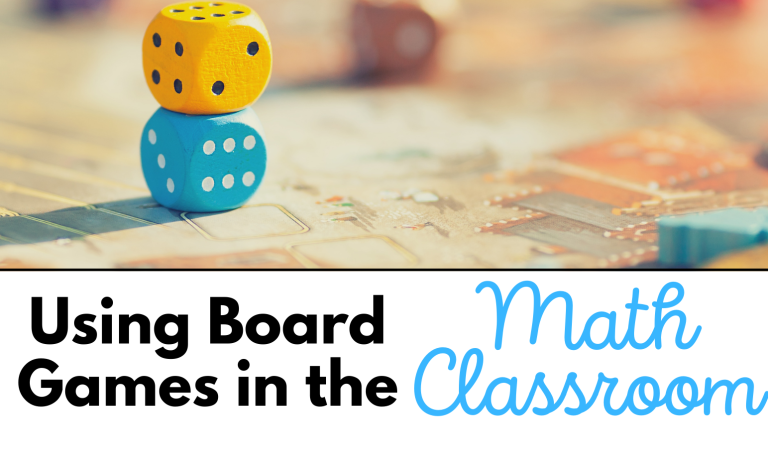Are you a classroom teacher looking for ways to engage your students and increase their learning? Look no further than board games! When it comes to math education, board games offer a range of benefits that can change the way students engage with mathematical concepts.
Benefits of Using Board Games
1). Board games make learning fun.
Board games make learning enjoyable. Many students are bored and unmotivated when in a typical math class. By using board games in the classroom, you can capture your students’ attention and create a positive learning environment.
2). Board games are hands-on.
Board games offer a hands-on approach to learning. Instead of listening to lectures or completing worksheets, students are actively participating in their learning. They get to manipulate game pieces, make decisions, and strategize, while practicing many math skills.
3). Board games promote collaboration.
Board games provide students with an opportunity to collaborate with their peers. Many math concepts can be challenging to understand. When students work together in a game setting they can learn from one another.
Creating and Using Board Games

Sometimes you may prefer to create your own board game. Here are some tips to use when creating a board game.
First, consider what the theme of your game is. You need to decide if you want to use a specific theme (like equations or percent) or if you would like to make a game board that is more generic and can be used over and over again with different math topics.
Once you have decided on your theme you need to design your game board. Consider the layout of the board, the spaces or paths that players will move along, and any additional elements such as cards, dice, or tokens that will be used while playing the game.
Next it’s time to create the rules and instructions for your board game. The rules should be clear, concise, and easy to understand, ensuring that students can quickly grasp how to play the game. Consider including examples or illustrations to demonstrate gameplay and provide clarity.
Once you have created your board game, it’s time to play it. Think about how you will be using the game in your classroom. Will you use it for review or to reinforce a math topic?
Remember to provide clear instructions and expectations to your students. Explain how the game connects to the content they have been learning. Encourage active participation and collaboration among students.
Conclusion
In conclusion, board games offer a fun and engaging way to make learning fun, and engaging. By creating board games specifically designed for the classroom, you can enhance student problem-solving, and critical thinking skills while aligning with your math goals. So go ahead, start creating educational board games that will have your students begging for more!
Too busy to create your own board game? Try The Lucky Circle board game for FREE! Click the image below to try it today!
Included in the product are task cards on two-step equations to use with the game. The board game can be used with any topic in math. Just create you own questions to use with it if you do not need the questions on two-steps equations.



